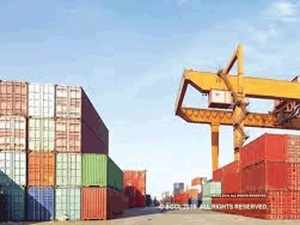 Agencies
AgenciesFears that China’s gains would exceed India’s made the Narendra Modi administration hold out on the Regional Comprehensive Economic Partnership (RCEP) deal in Bangkok on Tuesday. The decision has generated both cheer and sneer. Arguments on both sides have some merit. RCEP was launched in November 2012 “to achieve a modern, comprehensive, high-quality and mutually beneficial economic partnership agreement among the Asean [Association of Southeast Asian] member states and Asean’s FTA [free trade agreement] partners”, that would “cover trade in goods, trade in services, investment, economic and technical cooperation, intellectual property, competition, dispute settlement and other issues”.
The negotiations that began in May 2013 were stalling. But they picked up after the US, driven by protectionism, exited the Trans-Pacific Partnership (TPP) and ratcheted up a tariff war with China. At the heart of RCEP is not free trade but South Asian countries’, especially China’s, keenness to safeguard their economic growth by accessing newer markets in face of growing US and European protectionism.
Does RCEP in its current form represent mutual gain for India, the odd one out in the grouping? For, Southeast Asian countries are competitive vis-à-vis India for merchandise products, while India is more competitive in professional services categories. Clearly, if potential losses in the Asean market on the merchandise front were going to get compensated for by the gains in services, then the RCEP deal could be mutually beneficial for India.
For India, greater openness in services with these trade partners is essential to counter the challenge of global resistance to immigrants in the US and Europe. Commitments from India for lower tariffs on merchandise imports should be reciprocated with commitments from RCEP countries for lower barriers to Indian exports of services, and easier and more work visas for its pool of skilled labour.
India’s experience of negotiating for removing barriers to trade in services in Indo-Asean trade following the FTA in merchandise products is instructive. The sluggish pace of those negotiations has forced India to seek access for services to key Asean markets through bilateral agreements.
But is staying out of trade pacts a good strategy? India does not have trade agreements with the EU or the US. The exports category of T-shirts and singlets demonstrates how staying out of trade pacts is not sustainable. The US, a key market for India, imposes 32% tariff rate on India’s exports in this category, but nothing on exports from South Korea, as it enjoys zero tariffs under the US-Korea FTA. South Korea, a key competitor of Indian apparel exports, also enjoys zero tariffs under the EU-Korea FTA. So does Turkey. Not having trade agreements, thus, puts India at a disadvantage by impacting price competitiveness of its exports. Further, because of their FTAs, the competitors’ exports remain immuneto the growing threat of tariff hikes as protectionism grows in the US and Europe. Under the provisions of the trade agreements, countries such as South Korea and Mexico can seek compensations from the US if it extends its protectionist tariffs to their exports.
India has no such cushion. In fact, earlier this year, the Donald Trump government in the US withdrew the preferential treatment India enjoyed under its Generalised System of Preferences (GSP).
But can India gain competitiveness merely by signing FTAs? As research (bit.do/ff4uN) by Arpita Mukherjee, Angana Parashar Sarma and Soham Sinha of the Indian Council for Research on International Economic Relations (ICRIER) and Anusree Paul of the Indian School of Business and Finance shows, preferential tariffs don’t automatically boost apparel exports from India. Japan, a major apparel importer, operationalised the Comprehensive Economic Partnership Agreement (CEPA) with India from August 1, 2011. Both countries dropped tariffs on apparels to zero. But India’s share in the Japanese market remains an abysmal 0.09%. While competing economies like China, Vietnam and Bangladesh have cornered shares of 6.46%, 1.17% and 0.34% respectively.
This is because Indian exporters tend to underutilise trade agreements. The FTA utilisation rate, at under 25%, is among the lowest in Asia, according to the Asian Development Bank. As a result, India’s trade deficit with Asean nearly trebled from under $8 billion in FY10 to $22 billion in FY19 after the Comprehensive Economic Cooperation Agreement (CECA) was signed in 2010. The trade deficits with South Korea and Japan have expanded similarly after India operationalised trade agreements with them.
The reasons for underutilisation include faulty commitments and strict rules of origin. Logistics, compliance and transaction costs twice as high than in other countries erode competitiveness of Indian exports.
It’s, therefore, imperative for the policy objective to graduate from mere ease of doing business to ease of being globally competitive. Rather than simply run away from trade agreements.
(The writer is author of Lost Decade (2008-18): How India’s Growth Story Devolved into Growth Without a Story)
Download The Economic Times News App to get Daily Market Updates & Live Business News.
Subscribe to The Economic Times Prime and read the ET ePaper online.
Read More News on
Download The Economic Times News App to get Daily Market Updates & Live Business News.
Subscribe to The Economic Times Prime and read the ET ePaper online.










 Get Unlimited Access to The Economic Times
Get Unlimited Access to The Economic Times
